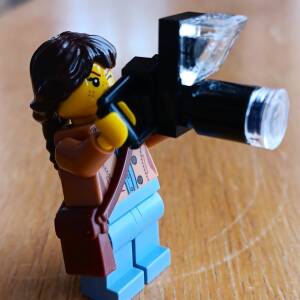The Postcard Run
Determination
and principles decide my
plans and my actions
~ carliewired
1. Waking up in Osoyoos, British Columbia was pleasant enough. My first job, however, was to find the tire shop downtown and see if they could fix the flat tire from yesterday. The shop was very accommodating. They removed the large screw, re-sealed the tire, inflated it and remounted it on the car in under 30 minutes. I wasn't even late for breakfast!
2. The main goal for the day was to deliver my 45 postcards, already addressed and written, to the post office in Oroville, Washington, USA. I can mail a postcard to an international destination for $1.15 cents from there. In Canada, the rate for the same postcard now costs $2.50 plus GST. ($2.63) So, in protest, I will no longer use Canada Post for my postcrossing. Oroville is a nice little town, just 5 miles from the border. Mission accomplished!! Once done, I was free to make like a tourist. The display of blooming balsamroot is amazing. Hillsides and slopes were covered with bright yellow blossoms shining in the sun.
3. We headed west on the Loomis-Oroville Road which follows alongside the Similkameen River most of the way to the turn off to the Canadian Customs at Chopaka. This route goes back north to the Crowsnest Highway (#3) on the Canadian side. When the Chopaka crossing is in view, so is this dilapidated cabin with the Chopaka Mountains in the background.
4. This was our first noticeably warm day. This marmot was out on the edge of the highway sunning himself. (The temperature got up to 21 degrees Centigrade in Kamloops today)
5. Spotted Lake, on Highway 3 near Osoyoos, British Columbia, is a fascinating place with an interesting story. It is a natural closed drainage basin which contains some of the highest quantities (in the world) of magnesium sulfate, calcium, sodium sulfates and other minerals. Most of the water in the lake evaporates over the summer months, leaving just the minerals. The spots on the lake appear and their colour depends on the mineral content. The First Nations of the Okanagan Valley consider this location to be a sacred site because of the therapeutic waters. During WWI, the minerals of the lake were used to make ammunition. Later, the lake was in the private hands of the Ernest Smith family for some 40 years. In 1979 an attempt by the family to create a spa got the attention of the First Nations who made an offer to purchase. Finally, in 2001, a deal was made to buy 22 hectares for $720,000 with 20% paid by the First Nations and the remainder paid by the Indian Affairs Department (taxpayers of Canada). The lake is now a protected site with no public access. One can admire it from the highway.
6. The Old Grist Mill in Keremeos opened in 1877 to turn locally grown wheat into flour for local customers. It is a water-powered mill that is the last remaining pioneer flour mill in the west. It is still capable of performing its intended tasks and has its original machinery intact. The tea room on the site now uses the flour from the mill in its recipes. The site also includes heritage gardens, heritage wheat fields and an heirloom apple orchard.
7. The apples trees at the grist mill are in bloom. They are making the bees very happy.
8. The area around the town of Keremeos is known for its vineyards, orchards, ranching and farming.
9. Zooming home,we stopped briefly on the hill overlooking Summerland, BC. Giant's Head Mountain, an extinct volcano, dominates the skyline.

Comments
Sign in or get an account to comment.


